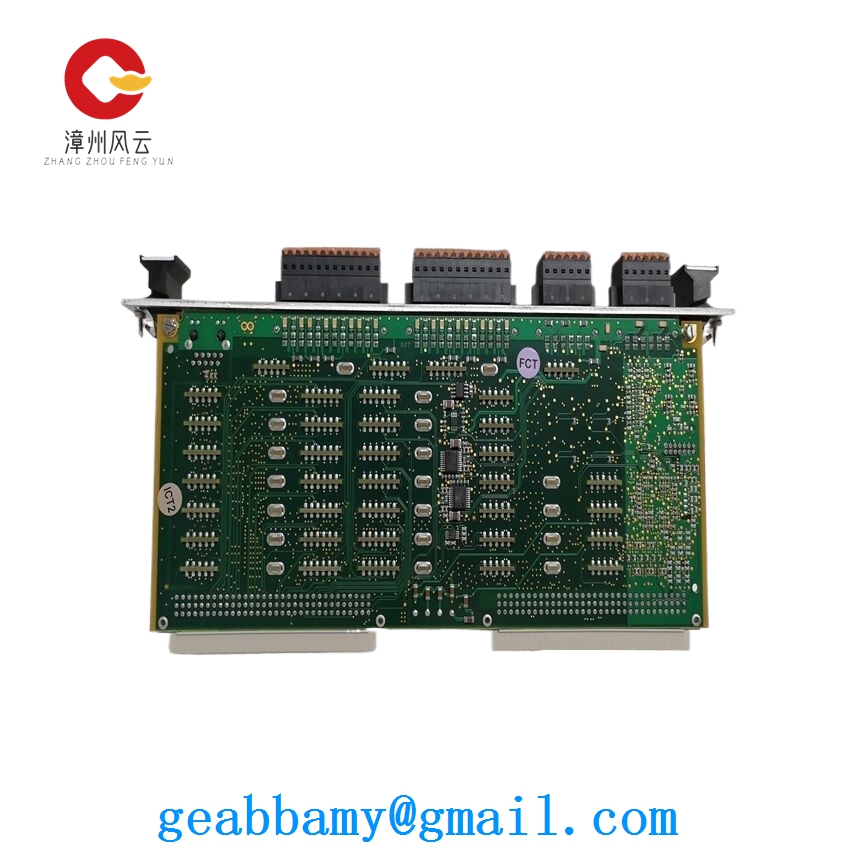Technical Parameters and Circuit Diagram Overview of ABB REXA 103 / RK 852 005 – PH
1. General Introduction
The ABB REXA 103 in combination with the RK 852 005 – PH is a specialized system designed for precise pH measurement and control in industrial processes. It is widely used in industries such as water and wastewater treatment, chemical manufacturing, and food and beverage production, where accurate pH monitoring is crucial for product quality, process efficiency, and environmental compliance.

2. Technical Parameters
2.1 pH Measurement Range
- The system can measure pH values over a wide range, typically from 0 to 14 pH units. This broad range allows it to handle various types of solutions, from highly acidic to strongly alkaline, making it suitable for diverse industrial applications.
2.2 Accuracy
- It offers high – accuracy pH measurements. The accuracy is usually within ±0.01 to ±0.02 pH units, depending on the specific calibration and operating conditions. This high level of accuracy ensures that the process is controlled within the desired pH limits, preventing product defects and optimizing chemical usage.
2.3 Temperature Compensation
- Since the pH of a solution is temperature – dependent, the ABB REXA 103 / RK 852 005 – PH system incorporates automatic temperature compensation. It can accept an input from an external temperature sensor or has an integrated temperature – measuring element. The system then adjusts the pH reading based on the temperature of the solution, providing accurate and reliable measurements across a wide temperature range, typically from 0°C to 100°C (32°F to 212°F).
2.4 Input and Output Signals
- Input: It can accept a pH electrode signal, which is a low – level millivolt signal proportional to the pH of the solution. The system is designed to work with a variety of pH electrodes, ensuring compatibility with different measurement requirements.
- Output: It provides multiple output options for communication and control purposes. Common output signals include 4 – 20 mA analog output, which can be used to transmit the pH value to a programmable logic controller (PLC) or a distributed control system (DCS). Additionally, it may offer digital communication protocols such as HART, enabling two – way communication for remote configuration, calibration, and diagnostics.
2.5 Power Supply
- The system can be powered by a standard DC voltage, often 24 VDC. It has low power consumption, making it suitable for use in remote or battery – powered applications in some cases.
2.6 Environmental Specifications
- Operating Temperature: The equipment can operate in a temperature range of -20°C to +60°C (-4°F to +140°F), allowing it to be installed in various industrial environments, including those with extreme temperature conditions.
- Protection Class: It has a high protection class, usually IP65 or higher, which means it is dust – tight and protected against low – pressure water jets from any direction. This ensures the long – term reliability of the system in harsh industrial settings.
3. Circuit Diagram Overview (General Description)
3.1 Signal Conditioning Circuit
- The pH electrode generates a very small millivolt signal (usually in the range of -414 mV to +414 mV for a pH range of 0 – 14). The signal conditioning circuit in the ABB REXA 103 / RK 852 005 – PH system amplifies and filters this weak signal. Amplification increases the signal strength to a level suitable for further processing, while filtering removes any noise or interference that may be present in the signal, such as electrical noise from the surrounding environment or electromagnetic interference (EMI).
3.2 Temperature Compensation Circuit
- If an external temperature sensor is used, the temperature signal is fed into the temperature compensation circuit. This circuit uses a pre – programmed algorithm or a lookup table to calculate the correction factor based on the measured temperature. The correction factor is then applied to the pH signal to obtain the temperature – compensated pH value.
3.3 Analog – to – Digital Conversion
- The temperature – compensated pH signal is then converted from an analog signal to a digital signal using an analog – to – digital converter (ADC). The ADC samples the analog signal at a high frequency and converts it into a digital value that can be processed by the microcontroller in the system.
3.4 Microcontroller Processing
- The microcontroller is the brain of the system. It receives the digital pH value, performs any necessary calculations or data processing, and controls the output signals. It also handles functions such as calibration, alarm generation, and communication with external devices.
3.5 Output Driver Circuit
- Depending on the output signal type (e.g., 4 – 20 mA or digital communication), the output driver circuit converts the digital data from the microcontroller into the appropriate analog or digital signal. For the 4 – 20 mA output, the driver circuit adjusts the current level based on the pH value, with 4 mA representing the lower end of the pH range and 20 mA representing the upper end.
In conclusion, the ABB REXA 103 / RK 852 005 – PH system is a highly accurate and reliable pH measurement and control solution. Its technical parameters and circuit design ensure precise pH measurements in a wide range of industrial applications, while its robust construction allows it to withstand harsh environmental conditions.


